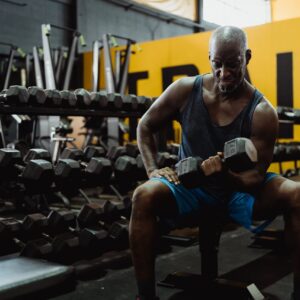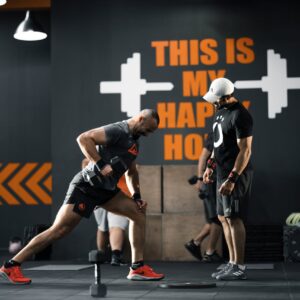Contents
- Function of Hamstring Muscles
- The Significance of Hamstring Training:
- 15 Best hamstring exercises
- 1. Towel leg curl
- 2. Lying Leg Curl
- 3. Single Leg Curl
- 4. Lying Dumbbell Leg Curl
- 5. Standing Leg Curl
- 6. Nordic Hamstring Curl
- 7. Seated Leg Curl
- 8. Stability Ball Leg Curl
- 9. Kettlebell single-leg deadlift
- 10. Barbell good morning
- 11. Stiff Leg Deadlift
- 12. Cable pull-through
- 13. Inner Thigh Stretch
- 14. Lying Hamstring Stretch
- 15. Foam Roller: Hamstring
- Exercise Selection for Hamstring Training
- The bottom line
When it comes to leg workouts, one muscle group that often gets overlooked is the hamstrings. The hamstrings consist of three separate muscles located behind the upper part of the leg: the biceps femoris, semitendinosus, and semimembranosus. The biceps femoris is further divided into long and short heads.
By focusing on targeted hamstring exercises, you can optimize the strength, power, and resilience of these muscles, enabling you to excel in your chosen sport. Whether you’re a sprinter, soccer player, basketball enthusiast, or engage in any other athletic pursuit, prioritizing hamstring development will undoubtedly have a positive impact on your overall athletic performance.
Function of Hamstring Muscles
The main function of the hamstring muscles is to flex the knee joint, bringing the lower leg closer to the buttocks. The hamstrings also contribute to hip extension, which involves moving the thigh backward and straightening the hip joint. This action is particularly important during activities like running, sprinting, and climbing stairs.
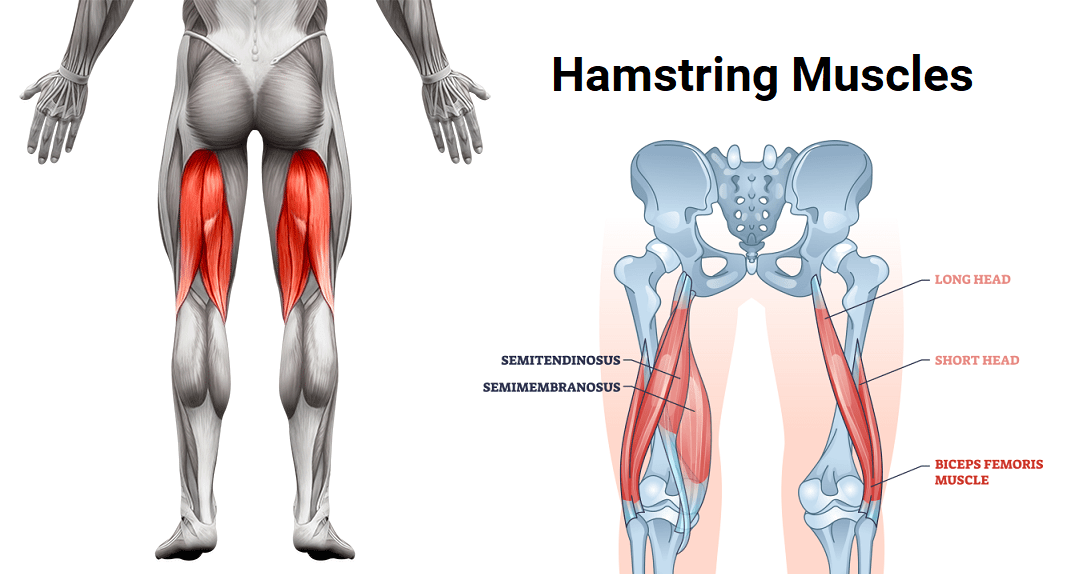
These muscles not only complement the aesthetics of well-defined legs but also contribute to overall leg symmetry when properly developed. By incorporating these exercises into your leg workout routine, you can optimize your hamstring development and experience the numerous benefits associated with stronger, more resilient legs.
The Significance of Hamstring Training:
The hamstrings, consisting of three primary muscles, play a crucial role in lower body strength, mobility, and stability. Neglecting the hamstrings during exercise can lead to muscle imbalances, hindering your progress and potentially causing discomfort or injuries.
1- Maintaining Leg Symmetry:
Leg symmetry is vital for achieving an aesthetically pleasing physique. While well-developed quadriceps contribute to a visually impressive front view, neglecting the hamstrings can result in an imbalanced appearance when viewed from the side or back. By focusing on hamstring exercises, you can achieve harmonious leg proportions, ensuring that your muscles appear proportionate and balanced from all angles.
2- Power and Explosiveness:
The hamstrings play a pivotal role in generating power and explosiveness, making them essential for athletes in various sports. Whether you’re sprinting, jumping, or performing explosive movements like kicking or leaping, strong and well-trained hamstrings contribute to optimal performance. These muscles are responsible for extending the hip joint and flexing the knee joint, enabling powerful movements and propelling you forward with speed and force.
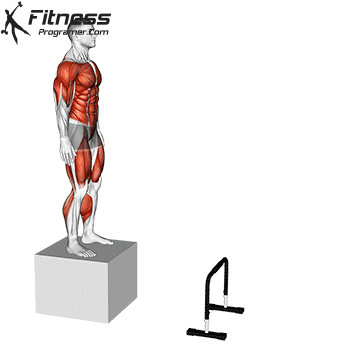
3- Agility and Change of Direction:
In sports that require quick changes in direction, such as basketball, soccer, or tennis, agility and maneuverability are paramount. The hamstrings play a vital role in decelerating your body’s forward momentum and stabilizing the knee joint during sudden stops, cuts, and pivots. Well-trained hamstrings provide the necessary strength, control, and stability to execute rapid changes of direction with precision and reduced risk of injury.
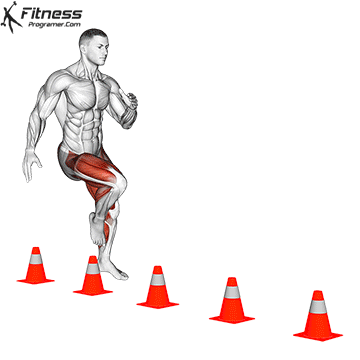
4- Speed and Acceleration:
Speed and acceleration are critical attributes in many sports, and the hamstrings are key contributors to these athletic abilities. As you push off the ground during sprinting or agility drills, the hamstrings contract forcefully to propel your body forward. By strengthening and conditioning these muscles through targeted exercises, you can increase the force production and efficiency of your leg movements, resulting in improved speed, acceleration, and the ability to reach peak performance levels.
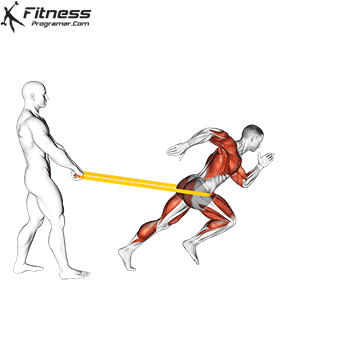
5- Preventing Injuries:
An often underestimated benefit of hamstring training is its ability to prevent injuries. The hamstrings are susceptible to strains and tears, especially during activities that involve explosive movements or require sudden changes in direction. Strengthening these muscles can significantly reduce the risk of hamstring-related injuries, such as pulls or tears, enabling you to engage in physical activities with confidence and reduced susceptibility to setbacks.
15 Best hamstring exercises
Here are lots of hamstring exercises that can not only build you muscles to your desire, but also strengthen the hamstrings.
1. Towel leg curl

The towel leg curl is a low-impact hamstring exercise that requires minimal equipment and can be performed virtually anywhere. It targets the hamstrings, glutes, and lower back muscles, helping to strengthen the posterior chain and improve lower body function and aesthetics.
2. Lying Leg Curl
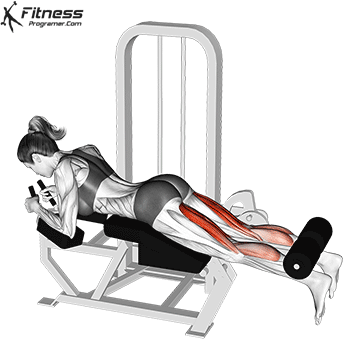
Lying leg curls is a machine exercise that helps build strength and muscle mass in your hamstring muscles. The machine provides a high level of muscle isolation, allowing you to specifically target and activate the hamstrings without significant interference from other muscle groups. This can be beneficial for people who want to increase muscle size and strength who want to prioritize hamstring development.
3. Single Leg Curl
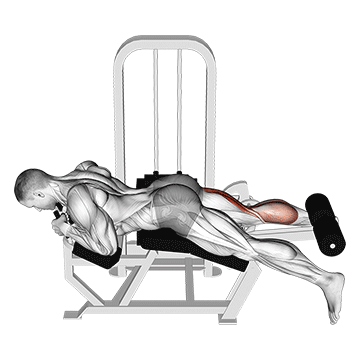
Unilateral exercises require higher levels of muscle activation and recruitment compared to bilateral exercises (1). Training the hamstrings unilaterally helps achieve better symmetry between the left and right legs.
In addition, many sports and activities require unilateral leg movements such as running, jumping and cutting movements. By working each leg separately, you can compensate for any differences in strength, size or coordination, achieve balanced development and reduce the risk of injury.
4. Lying Dumbbell Leg Curl
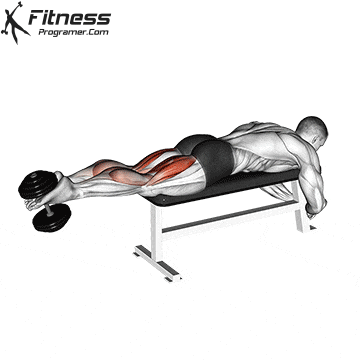
The lying dumbbell leg curl is a great isolation exercise that targets the hamstrings effectively. To perform lying leg curls, begin by lying facedown on the bench. Position yourself so that your ankles are just underneath the support pads, then bend your knees to lift your legs and raise the weight. As you execute the movement, you can grab the bottom or the sides of the bench for support, but you must remember to keep your upper body motionless.
5. Standing Leg Curl
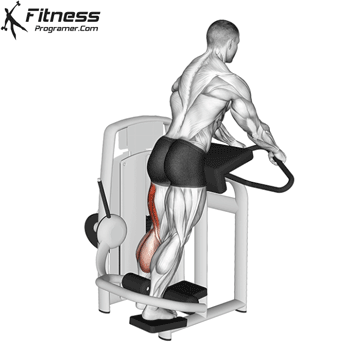
Standing leg curls involve a similar motion to that of the lying variation. The benefit here, of course, is that you are able to train each leg individually. Start by leaning over the bench while placing one leg in position behind the support pads. Grab the sides of the bench for support and remember to keep your back straight. Then, bend your knee to curl your leg upwards and lift the weight. Continue the upwards motion until the lower part of your leg is about parallel to the floor, then return to the starting position slowly and under control.
6. Nordic Hamstring Curl
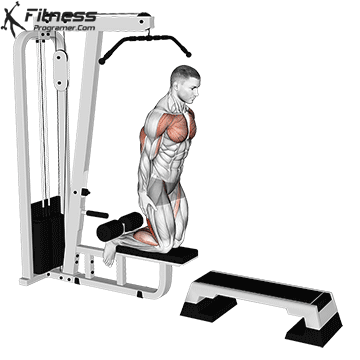
The Nordic hamstring curl, also known as the Russian hamstring curl or Nordic hamstrings exercise, is an advanced bodyweight exercise that specifically targets the hamstring muscles.
The Nordic hamstring curl primarily focuses on the eccentric (lengthening) contraction of the hamstrings. It’s commonly used by athletes and individuals looking to enhance hamstring performance and reduce the risk of hamstring strains. Developing eccentric strength in the hamstrings can improve athletic performance and reduce the risk of injuries, especially during high-intensity activities.
7. Seated Leg Curl
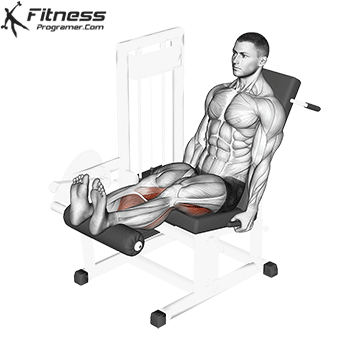
The primary focus of the seated leg curl is to isolate and target the hamstring muscles. By performing this exercise, you can effectively strengthen and develop the hamstrings, leading to improved muscle tone, size, and strength.
8. Stability Ball Leg Curl
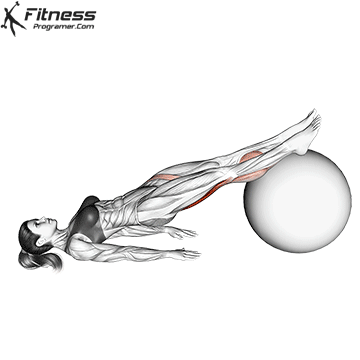
The stability ball leg curl provides a different stimulus compared to traditional hamstring exercises. The curling motion engages the hamstrings to flex the knees and pull the stability ball toward the glutes. The instability of the ball forces more muscle fibers to engage to maintain control and stability, leading to a higher level of muscle activation throughout the posterior chain.
By targeting the hamstrings, this exercise helps strengthen and develop these muscles, leading to improved performance in activities that involve knee flexion, such as running, jumping, and squatting.
9. Kettlebell single-leg deadlift
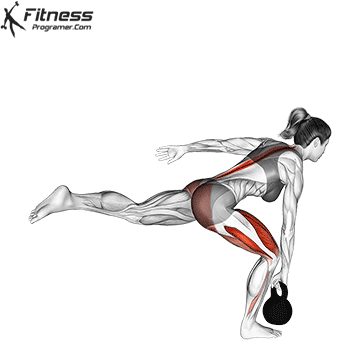
The kettlebell single-leg deadlift is an effective exercise that targets the hamstrings, glutes, and stabilizing muscles in the lower body. It involves performing a deadlift movement with a kettlebell while balancing on one leg.
The single-leg deadlift mimics movements used in sports and daily activities, such as picking up objects from the ground or maintaining balance while walking or running. By strengthening the hamstrings and glutes in this functional manner, you enhance your overall functional strength.
10. Barbell good morning
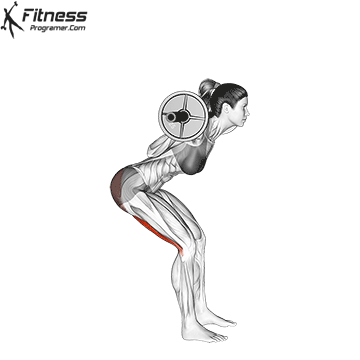
Good mornings place significant emphasis on the hamstrings, helping to strengthen and build these muscles. This compound exercise targets the posterior chain, including the hamstrings, glutes, and lower back.
To perform, stand upright with a barbell on your upper back. With feet shoulder-width apart, bend forward at the waist while keeping your back straight. Bend only as far as you’re comfortable, then return to the starting position carefully.
11. Stiff Leg Deadlift
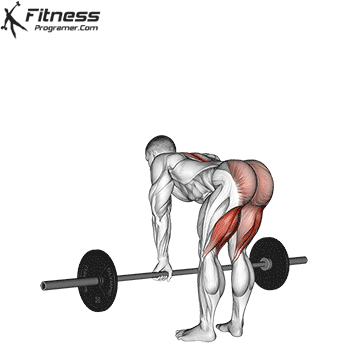
The stiff leg deadlift, also known as the Romanian deadlift (RDL), is a compound exercise that primarily targets the hamstrings, glutes, and lower back. It involves hinging at the hips while maintaining a slight bend in the knees, focusing on stretching and contracting the hamstrings.
The exercise also engages the lower back and glute muscles. Strong glutes are vital for hip extension, which is involved in various movements like walking, running, and climbing stairs. Activating and strengthening the hip muscles with the Stiff Leg Deadlift can improve lower body strength and performance in general.
12. Cable pull-through
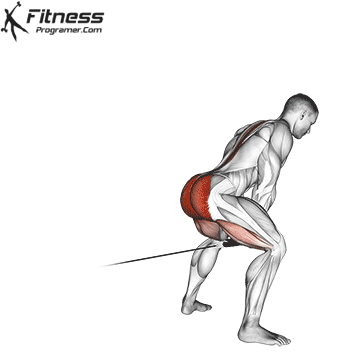
The cable pull-through is a compound exercise that targets the posterior chain, including the hamstrings, glutes, and lower back. Using a cable machine, you perform a hip-hinge movement, simulating the motion of a kettlebell swing.
Incorporating this exercise into your leg routine enhances posterior chain development and glute and hamstring strength.
13. Inner Thigh Stretch
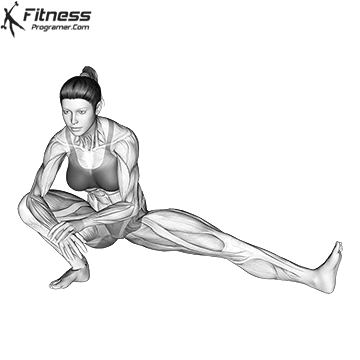
Stretching and maintaining flexibility in the hamstrings is crucial for injury prevention. This stretch helps to improve flexibility, increase range of motion, and release tension in the inner thigh and hamstring muscles. Hold the stretch for 20-30 seconds, breathing deeply and allowing your muscles to relax and lengthen. It can be performed as part of a warm-up before exercise, after a workout, or as a standalone stretching routine. As with any stretch, consistency and patience are key to seeing improvements in flexibility.
14. Lying Hamstring Stretch
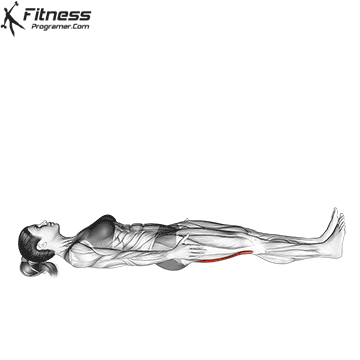
The lying hamstring stretch is a simple yet effective exercise for improving hamstring flexibility. It helps to lengthen and release tension in the hamstrings, which can be beneficial for individuals with tight muscles or those looking to improve their overall flexibility.
15. Foam Roller: Hamstring
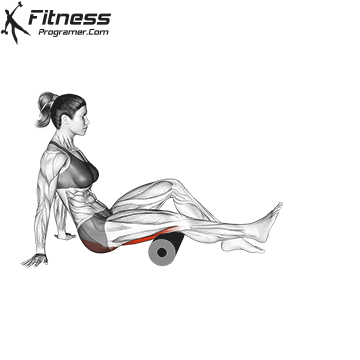
Foam rolling the hamstrings is a self-myofascial release technique that provides numerous benefits for the muscles and surrounding tissues. Foam rolling releases tension and adhesions, promoting flexibility and range of motion in the hamstrings.
Incorporate foam rolling into your warm-up routine or post-workout recovery for maximum benefits. Combine it with dynamic stretches and mobility exercises to enhance hamstring flexibility and mobility
Exercise Selection for Hamstring Training
Define your goals for hamstring training. Are you looking to increase strength, improve flexibility, enhance athletic performance, or reduce the risk of injury? Having clear goals will guide your exercise selection and program design.
1. Hamstring Warm-Up Exercises
A dynamic warm-up for the hamstrings is a crucial step to prepare your muscles for intense training. Incorporating exercises like walking lunges with high knee lifts, leg swings, inchworms, high knees, and butt kicks helps increase blood flow, activate the hamstrings, and improve mobility.
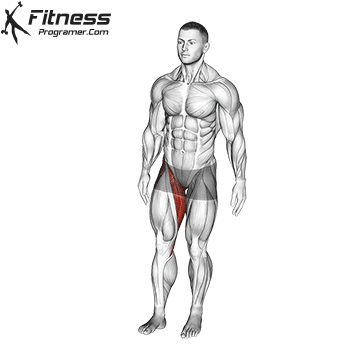
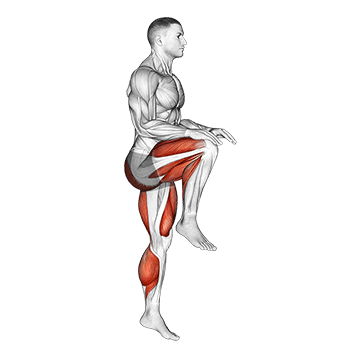
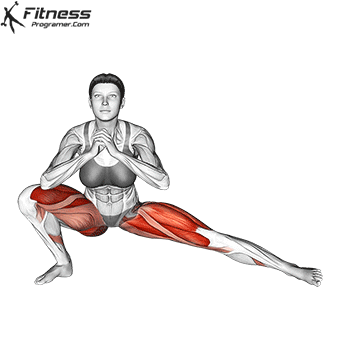
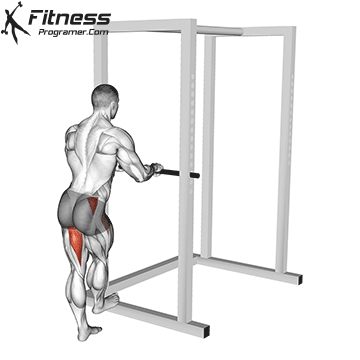
2. Compound exercises:
Compound exercises are a valuable addition to any hamstring training routine as they engage multiple muscle groups simultaneously, leading to greater overall strength and functional fitness. When it comes to hamstring strength, incorporating compound exercises that target the hamstrings along with other synergistic muscles, such as the glutes and lower back, can yield impressive results.
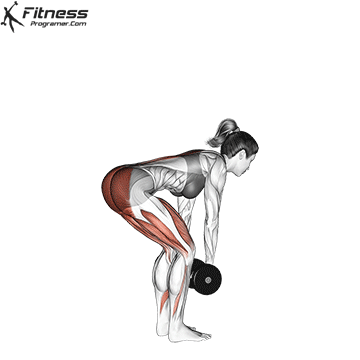
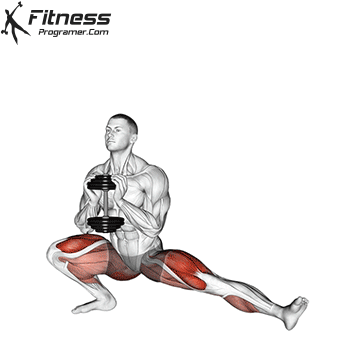

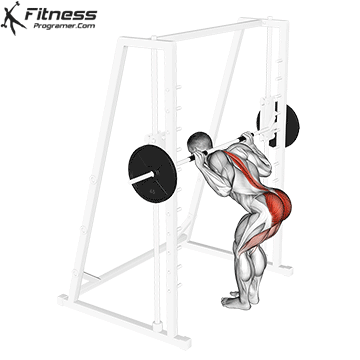
3. Isolation exercises:
While compound exercises play a crucial role in hamstring development, incorporating isolation exercises into your training routine can provide focused muscle activation and enhance the growth of the hamstrings. Isolation exercises target the hamstrings directly, allowing for better isolation and control of the muscle group.
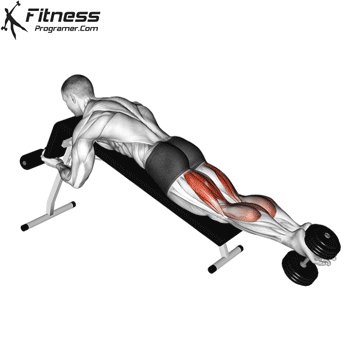
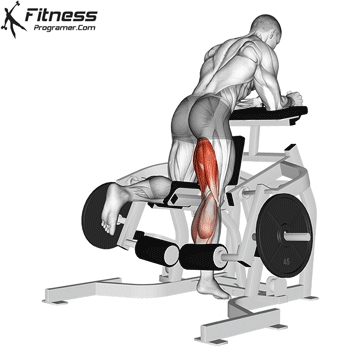


4. Flexibility exercises
Include flexibility exercises to improve hamstring flexibility and reduce the risk of injuries. Static stretches, such as standing hamstring stretches or seated forward folds, can be performed at the end of your workouts or on separate days dedicated to flexibility training.
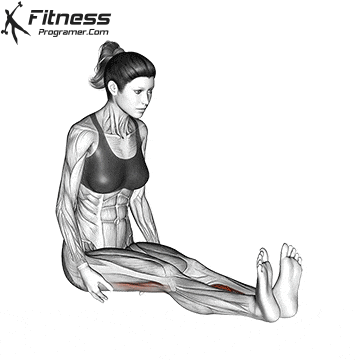
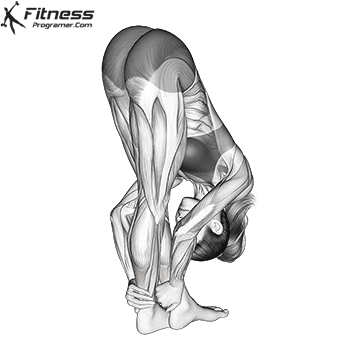
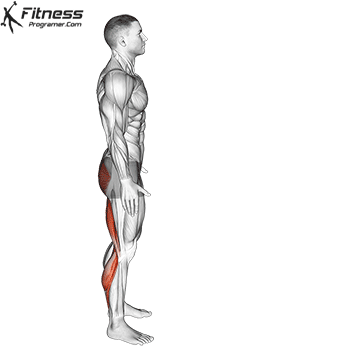
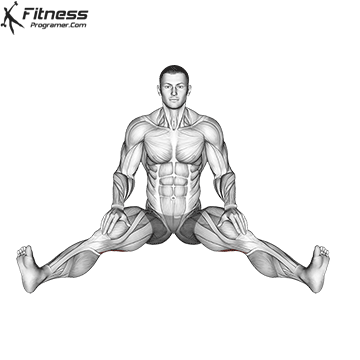
The bottom line
Choose a combination of compound and isolation exercises that target the hamstrings from different angles. Determine the number of sets and repetitions for each exercise based on your goals and fitness level. Aim for 2-4 sets of 8-15 repetitions for strength and hypertrophy, and 2-3 sets of 12-20 repetitions for muscular endurance. As for frequency, train the hamstrings 2-3 times per week, allowing for adequate rest and recovery between sessions. This variety will ensure balanced development and prevent muscle imbalances.


